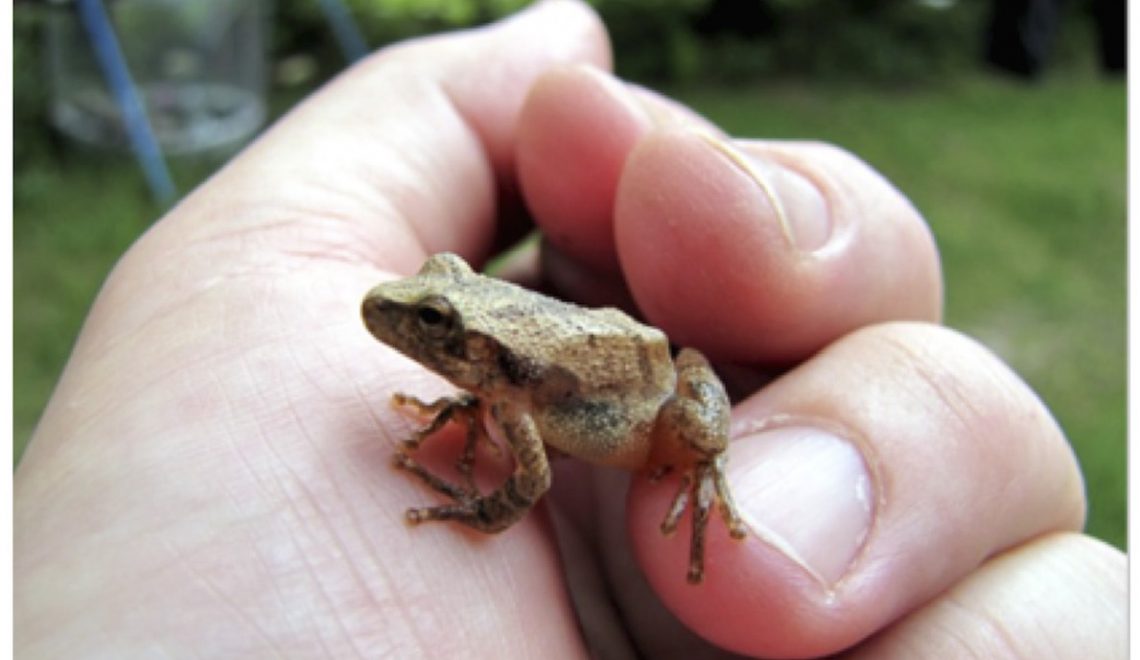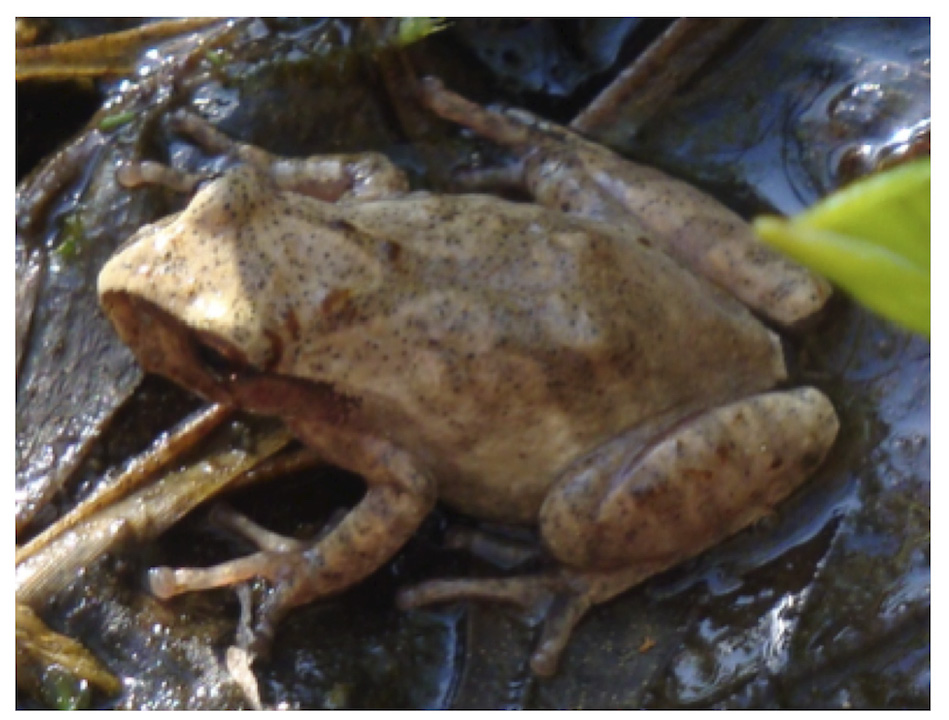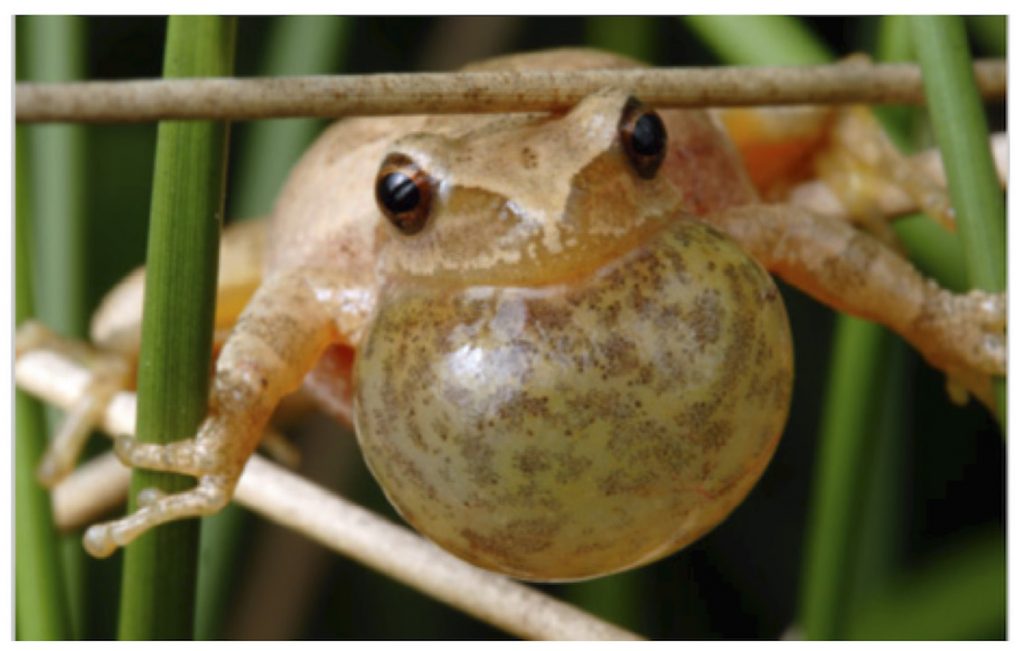Spring Peepers: A Loud Sign of Spring

by Linda Martinson
There are many welcome signs of spring in the Blue Ridge Mountains, but certainly one of the loudest is the chorus of mating spring peepers. Here we have the northern subspecies of spring peepers (Pseudacris crucifer), small chorus frogs that are widespread throughout the eastern USA and Canada, where ever they have the right habitat. And they are small, about the size of a paper clip, so although their chorus of calls is loud, they are seldom seen. It is indeed a challenge to find a small frog that could sit completely on half your thumb and that hides in the thick debris of the forest floor or clinging to the stems of dense plants in marshy areas.
Spring peepers all have have a dark “X” on their backs, the reason for the “crucifer” part of their Latin species name which means cross-bearer, and they are various colors of tan, gray, olive green, or brown with large toe pads for gripping plants. The females are usually lighter in color and slightly larger than the males that have darker throats. They are nocturnal carnivores, hunting small insects, primarily beetles, ants, flies, and spiders. Like many species of amphibians, spring peepers can survive the freezing of its internal body fluids, and they hibernate in the winter under logs or behind loose bark.

Spring peepers live primarily in wooded areas, but they are amphibious and require access to marshes, ponds or swampy areas to breed and lay eggs and for their tadpoles to survive. In late March and early April, when the warmer rains start, several hundred spring peepers come out of wooded areas to congregate in wetland breeding areas. The males swell their throats and begin their persistent calling for mates from the late afternoon to the early morning. Each individual call is a high pitched whistle, but their chorus of calls is variously described as sounding like crickets, young chickens, or jingling bells. The rising trill of their calls becomes more intense and aggressive as the density of frogs increases. After mating, each female lays underwater up to a thousand eggs that hatch into tadpoles in twelve days. The tadpoles eat algae and tiny organisms in the water and change into adults in a few weeks. Then their spring songs stop, and they return to the forest.

The habitat of spring peepers in the U.S. is declining because of the loss of wetlands, and their populations have decreased significantly in several areas. They are listed as endangered in two states. In particular, Montane Alluvial Forest communities are critical conservation areas in Western North Carolina, not only because of the excellent wildlife habitat they create, but also because of the severe decline of marshy habitats along the French Broad River, for example, and its tributaries. This type of alluvial community is declining; there were once as many as 1000 acres of marshy areas in the broad basin of the French Broad River now reduced to less than 20 acres, mostly by drainage for agriculture and development. We are fortunate, however, to still have large and thriving populations of spring peepers in the area, so enjoy their passionate and optimistic chorus as a sure sign of spring.
photographs from naturenorth.com and animalspot.net





49 comments